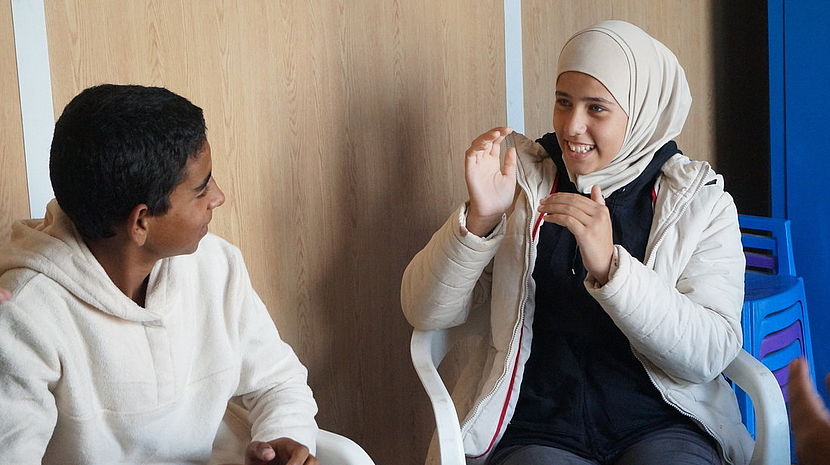20.07.2018 The HLPF is over, now what?

The High-level Political Forum took place from 9-18 July and focused on transformation towards sustainable and resilient societies. The Sustainable Development Goals (SDGs) under review included 6, 7, 11, 12, 15, and 17. During the second week, 46 countries presented their Voluntary National Reviews (VNRs) on SDG implementation. During these VNR presentations, persons with disabilities were included 36 times largely stemming from advocacy from various stakeholders at the global, regional, and national levels via the Stakeholder Group of Persons with Disabilities.
Our DPO partner, Mohammed Loutfy, speaking about persons with disabilities to Ghasan Hasbani Deputy Prime Minister and Minister of Public Health of Lebanon at the HLPF
The 36 references include references to persons with disabilities in VNR presentations, civil society presentations with questions to the government, and/or government responses to other government or civil society questions. The countries in bold are where CBM was directly or indirectly involved in advocacy. Thank you to everyone who helped in this process!
Andorra, Australia, Bahamas, Benin, Cabo Verde, Canada, Colombia, Dominican Republic, Ecuador, Egypt, Greece, Ireland, Jamaica, Kiribati, Lao PDR, Latvia, Lebanon, Lithuania, Mali, Malta, Mexico, Namibia, Niger, Palestine, Paraguay, Poland, Romania, Senegal, Singapore, Slovakia, Spain, Sudan, Switzerland, United Arab Emirates, Uruguay, and Vietnam.
Now that the HLPF has concluded, it is important for DPOs and advocates to follow up with their government to assess outcomes and build partnerships at the national level. Not all countries have HLPF follow-up mechanisms in place, but it is important to remind political leaders that this is not a one-time obligation, but rather that this needs to be an ongoing permanent dialogue. The national follow-up mechanism should be a constructive approach to address issues raised in the global-level review process, or issues that have been left out. The following are some key points on how to initiate and participate in a follow-up process after the HLPF at the national level:
- Watch your country’s voluntary national review on UN Web TV and in addition analyze the submissions (short and long) written reports (in some cases the reports differ from the presentations). On the basis of the analysis, prepare an advocacy paper highlighting issues that were addressed and also those left out.
- Find out if there is a follow-up mechanism on the HLPF planned by your government.
- (Re)connect with mainstream civil society coalitions to collaborate and propose to the government to establish a follow-up mechanism.
- Contact and arrange meetings with the Ministry/Minister who presented at the HLPF with your advocacy paper prepared (refer above).
- Advocate to establish synergies with other existing national follow-up or review mechanisms, such as national consultations on the SDG implementation plan, national development plan (often linked to the SDGs), and national human rights review mechanisms.
- Propose a partnership to your government and consider engaging with the International Disability Alliance and International Disability and Development Consortium Partnership on SDGs.
These suggestions are from the CBM and International Disability Alliance Toolkit for DPOs on the Voluntary National Reviews.